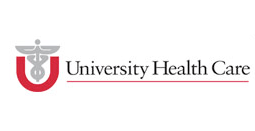Anesthesiology is more than just pain relief. It includes the total care of the surgical patient before, during, and after surgery. Dr. Derek Sakata, Anesthesiologist with University Health Care, bring Studio 5 viewers up-to-date on what they need to know about this important specialty.
Common Fears
Some people are afraid of receiving anesthesia, despite it being one of the safest specialties in healthcare. A patient’s main concern is how they are going to feel afterwards. Top concerns include:
· Vomiting
· Pain
· Nausea
· Somnolence (feeling groggy or “out-of-it”)
If you are afraid of anesthesia from a prior experience or just fear of the unknown, please talk to your anesthesiologist about it.
· Tell them about your previous experiences, or what you fear.
· Ask them to explain your options for comfort and recovery.
· Allow them to explain what is going to happen to you so there are no surprises.
The fact is anesthesia is very safe. In the last 50 years there have been great advancements in the specialty leading to better techniques, drugs, and devices for delivering anesthetics. However, this has been countered by the fact that the following patient population is increasing:
· Elderly
· Overweight
· Patients with Asthma
· Patients with Obstructive Sleep Apnea
· Patients with GERD
Anesthetic Gas
Unfortunately, some of the same anesthetics and drugs used to make patients feel comfortable and ensure safety during surgery offer no benefit after surgery and can complicate the recovery process. One such drug is anesthetic gas.
Studies show that anesthetic gas can linger in the body for a long time after surgery. This lingering gas has been linked to nausea, vomiting, respiratory complications, agitation, and other unpleasant sensations. Until recently, there had been no option for anesthesiologists to remove anesthetic gas from a patient’s body.
New Device Helps Remove Anesthetic Gas
University Health Care is now using a tool to eliminate anesthetic gas. It is called the QED-100 recovery device, and it clears anesthetic gas from patients after surgery.
· The Recovery Device is safe. It does not employ any chemical reactions and uses the body’s natural mechanism for removing inhaled anesthetics; therefore, there are no new drug interactions to consider.
· By clearing the anesthetic gas, a patient experiences a faster, more predictable recovery. This is particularly beneficial to elderly and overweight patients, who can’t clear anesthetic as well.
· As soon as a surgery is complete, the anesthesiologist puts on the QED-100 recovery device. The device actively clears the anesthetic from the brain and lungs, using an anesthetic absorber and breathing loop.
· With less anesthetic gas in their bodies, patients recover from anesthesia faster and feel better.
· University Health Care patients are now enjoying this new technology.
If you’d like to know more about anesthesiology or 160 other medical specialties, check out the University Health Care website at heathcare.utah.edu















Add comment